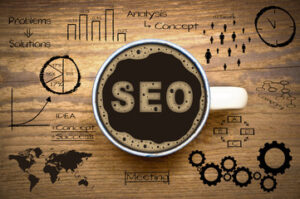Ceilings provide insulation and contribute to the soundproofing of a room. They also add to the overall aesthetics of a home or business. When a homeowner discovers ceiling damage it is important to call in a professional drywall and painting company.

Regular inspections can help identify early signs of cracks, stains or plaster damage. It is also important to maintain adequate ventilation to mitigate moisture issues like leaky roofs or burst pipes. Contact Ceiling Repairs Perth for professional help.
Cracks in ceiling repairs can be an indicator of structural damage that must be addressed before the crack spreads or the ceiling collapses. Detecting these problems early on and seeking professional help from drywall and painting contractors ensures that the problem is taken care of promptly and efficiently, preventing any potential future damage to the rest of your home or your family.
Hairline cracks in the ceiling are normal but if they widen or form a noticeable pattern it is time to call for help. Depending on the severity of the crack it may be necessary to get up in the attic and cut away the damaged portion of the ceiling, or if there is a lot of water damage present or other warning signs such as a musty smell or mold growth, then a full ceiling replacement might be necessary.
If the cracks are a result of structural damage it will be necessary to get a qualified carpenter in to take a look at the situation and carry out the necessary work. Structural damage is the most serious and should only be dealt with by professionals as leaving it untreated could lead to a ceiling collapse or even a whole house structure collapse.
A wide range of issues can cause a ceiling to crack, from a small amount of natural house settling through to ground movement, the settling of a new building caused by poor foundation design, moisture buildup due to a leaking roof, old water leak damage that has not been repaired correctly and much more.
Repairing a ceiling crack involves sanding down the surface of the ceiling to remove any loose or flaking drywall and then applying a drywall compound or filler to the area to patch the hole. This process can be fairly involved and requires you to be able to reach the ceiling using a ladder, so it is always best to call in a professional rather than trying to tackle the job on your own. When the compound has been sanded and is smooth you can paint over it, again to match the rest of the ceiling. There are a number of products on the market for repairing a ceiling that come in sprays or semi-liquids for applying with a sponge and you will need to choose one that matches your existing texture.
Water Damage
A water-damaged ceiling is a serious problem and requires immediate attention to prevent more severe structural damage and microbial growth. Whether from burst pipes, roof leaks, heavy rain or other causes, water damage is an indication that the ceiling materials are deteriorating. Water damage is also a significant health risk, as it can lead to mold and mildew and affect indoor air quality. If the water damage is caused by a plumbing issue, it can be easily remedied by repairing the source of the leak. However, if the water damage is a result of other factors, such as heavy rains or old roof tiles, it might be more challenging to repair.
Once the leakage has been repaired, the damaged area must be dried thoroughly to ensure that the ceiling will be structurally sound and free from mould and mildew. This process may involve opening up the ceiling panels, using a dehumidifier or fans, and other measures to eliminate excess moisture from the affected area. It is important to dry the entire area of the ceiling, as moisture and dampness can cause the material to warp or even collapse.
Another common sign of a water-damaged ceiling is discolouration. This can range from a light brown to black in colour and is most likely a result of the moisture damage to the materials. If you notice that the water stains are located near rooms that contain plumbing, such as the bathroom or kitchen, this is often an indicator of a plumbing problem.
In the event of water damage, it is recommended to consult a professional builder for a more comprehensive repair. They can assess the damage and recommend the most appropriate solutions, including a full replacement of the ceiling. Once the ceiling has been repaired, it is essential to inspect it regularly to ensure that it does not become sagging or develop any other issues. This will help to keep your home healthy and in good condition. Taking these preventative steps can help you save on costly repairs in the future!
Structural Issues
Structural cracks in ceilings are a common concern, often caused by natural house settling and environmental factors. Hairline cracks may be purely cosmetic and require nothing more than drywall mud or joint compound patching, but more significant cracks may indicate a structural problem that needs to be addressed.
Water damage is another frequent issue that can significantly affect the integrity of a ceiling. Not only does it create unsightly stains, but over time, it can also lead to mold growth and structural damage. Addressing the source of the leak promptly is essential to prevent further damage and costly repairs in the future.
Ceiling water stains are a telltale sign of leaking pipes or other issues. The best way to repair them is to identify and fix the cause of the leaking, which can be anything from a clogged gutter to faulty plumbing. It is also important to dry the affected area using high-powered fans, dehumidifiers or open windows to help prevent mold and structural damage.
If you notice a crack in your ceiling that appears wide and shallow, it is likely due to a shrinkage of the drywall that was originally used in the construction of your home. These type of cracks are not uncommon in older homes and can usually be easily repaired by applying a layer of drywall compound over the affected area.
Cracks in the center of a ceiling are often accompanied by sagging and can be a sign of serious structural damage that requires immediate attention. This can be caused by a number of issues, including heavy items above the ceiling, foundation settlement or substantial water damage.
Water damage can be devastating for the structure of a ceiling and should always be repaired as soon as possible to avoid further damage and potential health hazards. A professional can provide an assessment of the damage, estimate costs per square foot and execute the repair in a timely and efficient manner, providing a seamless finish that looks great. Contact us today to schedule your repair! We offer free estimates on all of our services.
Old Textures
Many homes in the US have textured ceilings. Textured ceilings are more aesthetically pleasing than smooth ones and can hide imperfections such as drywall cracks or holes. They can also be easier to clean than smooth ceilings because they trap less dust. However, repairing a textured ceiling can be difficult. The problem lies in blending in the texture of the repaired area with the rest of the ceiling. If the damage is extensive, a full removal and re-texturing of the entire ceiling may be necessary.
If the repair is small, a professional can easily blend in the new texture with the old. This is usually done by spraying the textured ceiling with a special spray that contains a matching color of the existing texture. The ceiling is then lightly sanded to smooth out high points and create a seamless look.
In more severe cases, the old texture is completely removed and the drywall is skimmed with drywall compound. This is done to prepare the surface for paint or a new texture.
A drywall professional will use a hand sander or electric sander to smooth the drywall. It is important that the drywall is completely smooth so that the ceiling can be painted and re-textured.
Removing and re-texturing a ceiling is a major job and can be extremely messy. It is important that you cover all furniture and floors with drop cloths to protect them from the spraying compound. It is also a good idea to cover any light fixtures or power outlets with plastic to protect them. It is also a good idea to wear a mask to avoid breathing in any spraying debris.
It is a good idea to consult with an experienced drywall contractor before trying to repair or remove an old textured ceiling. They can give you advice on what tools and materials are best for your situation.
Some drywall professionals will also offer to inspect your ceiling for signs of mold or mildew. This is because these spores can cause serious health problems if they are inhaled. They can also bleed through the ceiling and stain it. If they are present, these spores need to be professionally cleaned and the underlying moisture issues addressed before a repair can be made.

